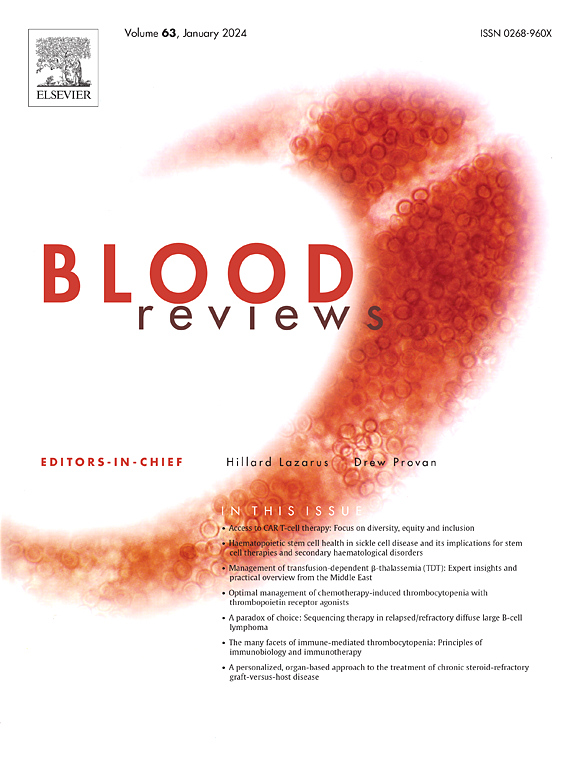镰状细胞病新药物治疗临床结果的证据和差距:一项系统的文献综述,突出临床试验和现实世界研究的见解。
IF 5.7
2区 医学
Q1 HEMATOLOGY
引用次数: 0
摘要
本系统综述旨在总结基于临床试验和真实世界数据的l-谷氨酰胺、克里赞单抗和voxelotor治疗镰状细胞病(SCD)的临床结果,并确定观察结果中的任何空白。该综述确定了截至2024年5月31日报告数据的97项研究。一项关键的l-谷氨酰胺III期研究表明,与安慰剂相比,接受l-谷氨酰胺治疗的患者疼痛危机减少25%,住院天数减少33%。l-谷氨酰胺通常耐受性良好,副作用最小。l-谷氨酰胺的实际研究强调患者的依从性和药物可及性和批准的障碍是关键问题。在SUSTAIN研究中,5mg /kg剂量的crizanlizumab分别将血管闭塞危像(VOCs)和住院率降低了45%和41%。实际研究表明,crizanlizumab可减少复杂的VOC事件。STAND试验的高停药率和结果导致crizanlizumab的使用显著减少。HOPE试验表明,在接受voxelotor治疗的患者中,血红蛋白反应改善了51%,溶血标志物降低。虽然一些现实世界的研究报告了挥发性有机化合物和住院治疗的减少,但结果并不一致,也不是结论性的。需要进一步的研究来评估这些新疗法对SCD终末器官特异性并发症的影响。本文章由计算机程序翻译,如有差异,请以英文原文为准。
Evidence and gaps in clinical outcomes of novel pharmacologic therapies for sickle cell disease: A systematic literature review highlighting insights from clinical trials and real-world studies
This systematic review aims to summarise the clinical outcomes of l-glutamine, crizanlizumab, and voxelotor in the treatment of sickle cell disease (SCD) based on clinical trials and real-world data and to identify any gaps in the observations. The review identified 97 studies reporting data until 31 May 2024.
A pivotal phase III study of l-glutamine showed that patients treated with l-glutamine had a 25 % reduction in pain crises and 33 % fewer hospital days compared to placebo. l-glutamine was generally well tolerated with minimal side effects. Real-world studies of l-glutamine emphasize patient adherence and obstacles to medication accessibility and approval as key concerns. In the SUSTAIN study, a 5-mg/kg dose of crizanlizumab reduced the occurrence of vaso-occlusive crises (VOCs) and hospitalizations by 45 % and 41 %, respectively. Real-world studies of crizanlizumab showed a reduction in complicated VOC events. The high discontinuation rate and results of the STAND trial led to a significant decrease in the use of crizanlizumab. The HOPE trial demonstrated a 51 % improvement in hemoglobin response and a reduction in hemolytic markers in patients treated with voxelotor. While some real-world studies have reported a decrease in VOCs and hospitalizations, the results are inconsistent and not conclusive. Further studies are needed to assess the impact of these novel therapies on end-organ-specific complications of SCD.
求助全文
通过发布文献求助,成功后即可免费获取论文全文。
去求助
来源期刊

Blood Reviews
医学-血液学
CiteScore
13.80
自引率
1.40%
发文量
78
期刊介绍:
Blood Reviews, a highly regarded international journal, serves as a vital information hub, offering comprehensive evaluations of clinical practices and research insights from esteemed experts. Specially commissioned, peer-reviewed articles authored by leading researchers and practitioners ensure extensive global coverage across all sub-specialties of hematology.
 求助内容:
求助内容: 应助结果提醒方式:
应助结果提醒方式:


